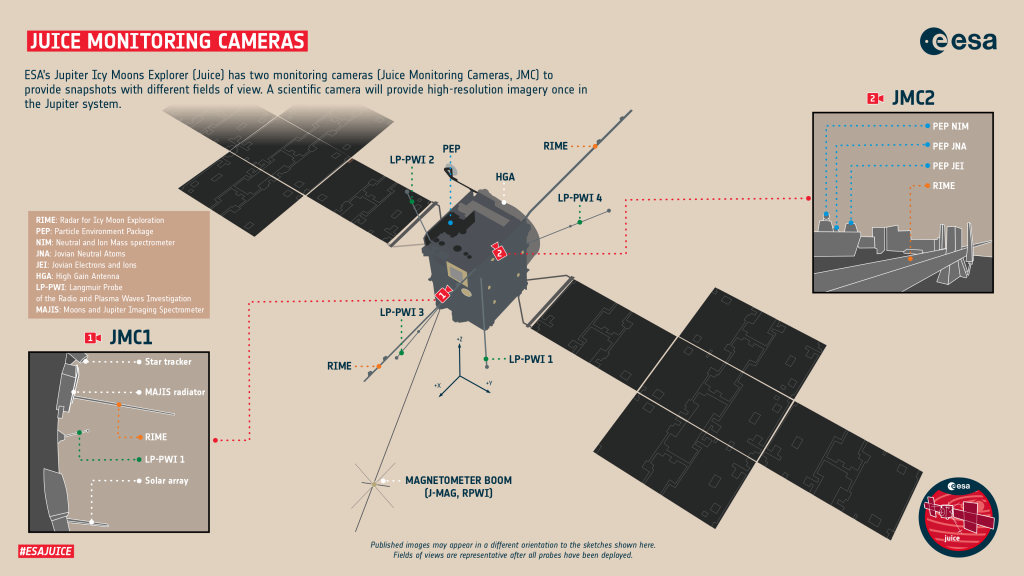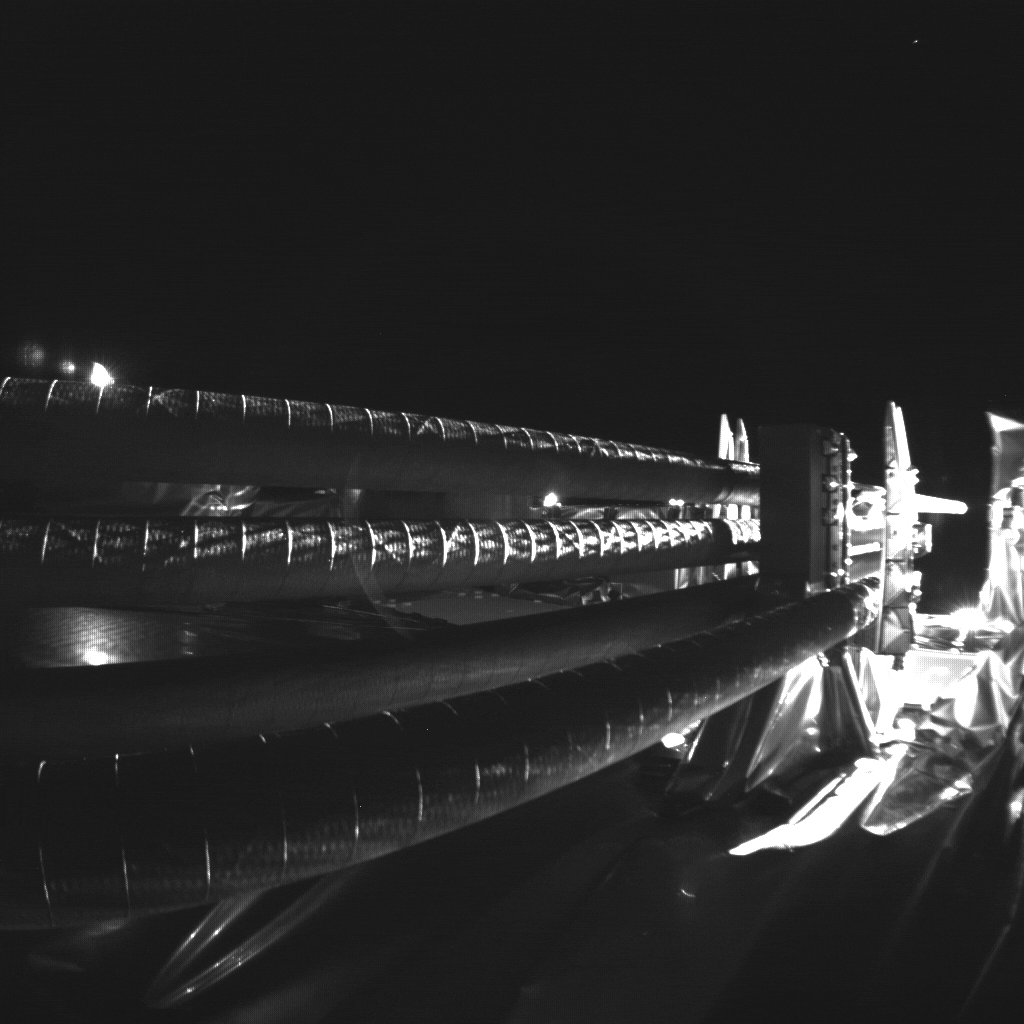Over the weekend Juice’s operations and instrument teams carried out a ‘dry run’ of August’s first-of-its-kind lunar-Earth flyby.
Cameras and instruments were activated as they will be during the real double flyby. The aim was to ensure that all of Juice’s systems react exactly as expected, to reduce the already small risk associated with the gravity assist manoeuvre.
All commands were sent in advance and Juice was monitored remotely, with the help of Juice’s two onboard monitoring cameras: Juice Monitoring Camera (JMC) 1 and 2. These photograph parts of the spacecraft from different angles, allowing teams to confirm that Juice’s various booms and antennas are positioned as they should be.
These are the images snapped by JMC1 (above) and JMC2 (below) over the weekend. If we squint, we can just about see some structure of the spacecraft, and absolutely nothing in the background – exactly what the team was expecting and hoping for!


The images look very dark because they were taken using exposure times tailored for the lunar-Earth flyby. As Juice flies past the Moon then Earth on 19–20 August, we expect to see them appearing in the background of the images, and the spacecraft structures will become clearer.
The image below shows a guide to Juice’s monitoring cameras, though the published images can appear in a different orientation, as we see above. Find out more about the monitoring cameras here.

The dry run was very helpful for identifying any issues with the commands being sent to instruments. Instrument teams will spend the next weeks correcting these issues to ensure that they are ready to operate their instruments effectively during the real lunar-Earth flyby.
During the real flyby of the Moon, Juice’s Radar for Icy Moon Exploration (RIME) instrument will have some time to observe alone. The dry run also provided the opportunity to test out how other instruments interact with RIME, ensuring that the radar’s measurements will be undisturbed.

Follow this blog for updates, or follow @esa_juice, @esascience and @esaoperations on X.

Discussion: 4 comments
NASA recently announced that there are some problems with the radiation resistance of transistor components used in the design of Europa Clipper. I wonder if this could also become an issue for JUICE?
Once NASA’s test results are available, ESA will carry out an assessment to establish whether Juice could be similarly affected. It is important to note that Juice will be exposed to lower levels of radiation than Europa Clipper.
My greatest respect to your successful mission up to now, not only the images you got and shared even the communication between spaceship and earth stations. I wonder the precision of the antenna systems to hit the small object in these big distances and getting reply with picowatts of power. I spent 16 years as radio officer on merchant ships around the globe and I remember which problems we had to establish shortwave connections around the globe. Many thanks that I get the opportunity to watch this fascinating missions.
Hi Detlef, thanks for your question! Here is the answer from the team:
ESA’s Estrack deep space antennas are 35 m dishes, with a field of view in the X-Band frequency range of about 35 millidegrees in the main beam. The antenna pointing accuracy is in the order of millidegrees. Thanks to their high-performance, cryogenically cooled low noise amplifiers and feed system, the receivers are able to lock on a signal which arrives at a power in the order of 0.01 picowatt.